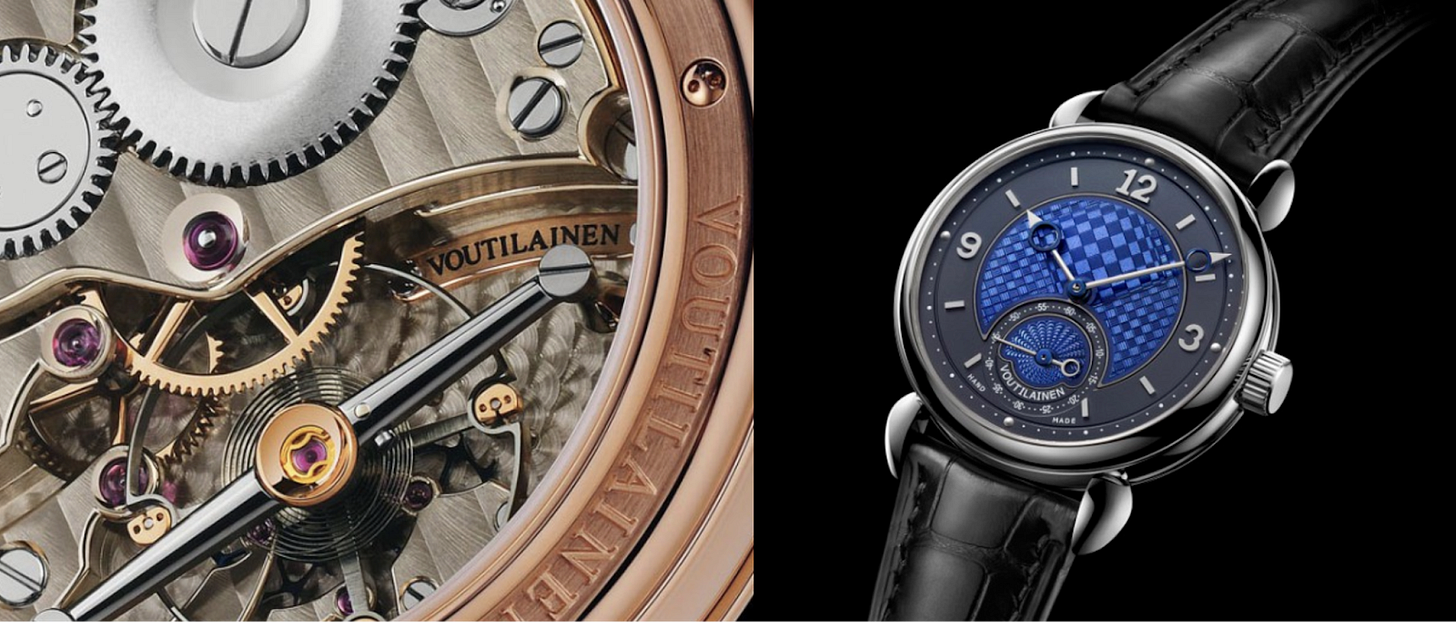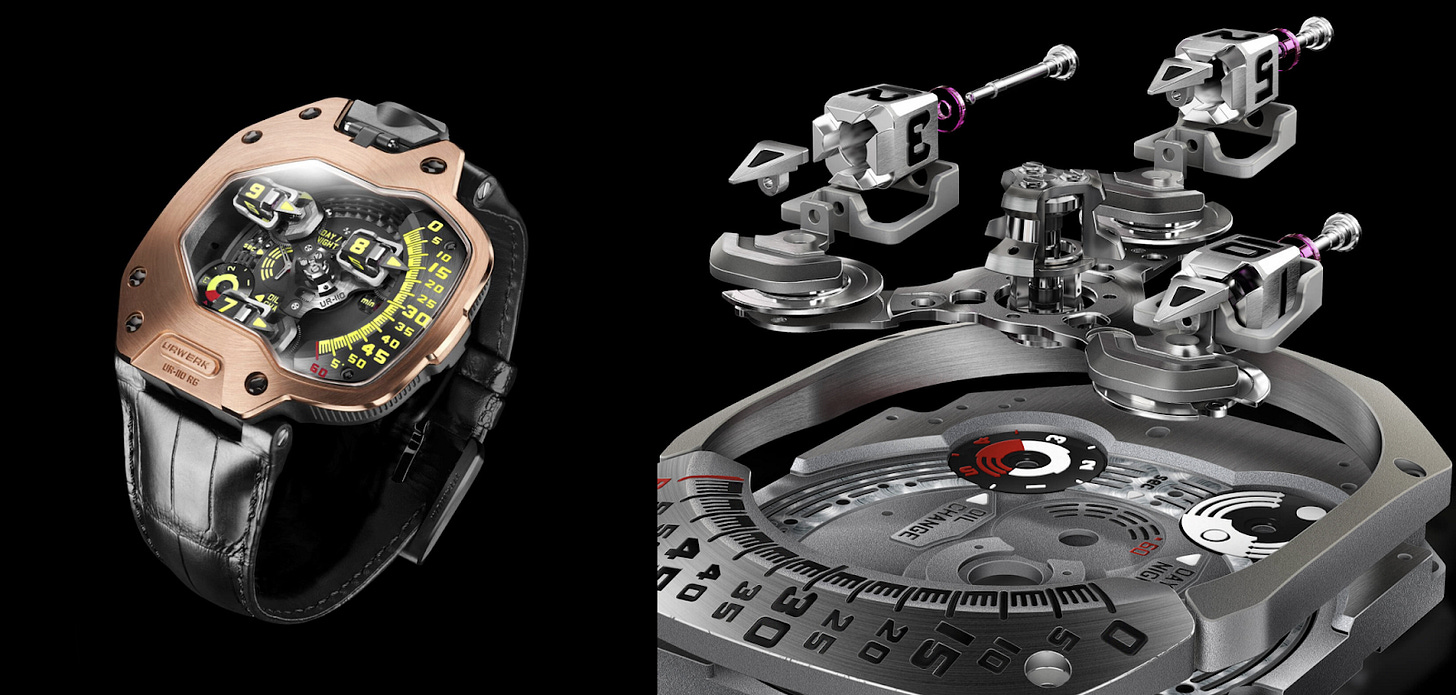Against the Grain: When Watchmakers Think Like Artists
What Happens When Watchmakers Stop Chasing Time—and Start Listening to It.
In Geneva ateliers and converted chapels, a quiet rebellion is underway. A new generation of independent watchmakers is casting off commercial expectations to craft timepieces that function more like philosophical objects than mere instruments. These are not just watches—they are wearable meditations. Their creators work like monks and think like poets, dedicating years to single pieces that interrogate the very nature of time.
In the hushed workspace of Rexhep Rexhepi’s Geneva atelier, time dilates. Not in the metronomic sense of oscillating escapements or the mechanical beat of factory output, but in the deep, contemplative rhythm of human attention. Each gesture—whether filing a bridge, inspecting under a microscope, or choosing to polish or leave raw—is an act of deliberate meaning. For Rexhepi, a Kosovo-born master trained in both traditional and contemporary horology, timekeeping is no longer about efficiency or spectacle. It is about expressing presence.
His watches, made under the name Akrivia, are produced in radical scarcity: fewer than thirty per year. Each is assembled by a single watchmaker from beginning to end. Such constraint ensures that every component receives the intimacy of attention that industrial processes inevitably smooth over. The result is work that transcends precision. Rexhepi’s signature grainy movement finish, hand-hammered and luminous in the light, is not ornamental—it is evidence of the maker’s hand, the trace of time rendered in steel.

His Grand-Rue workshop is more than a studio. It is a constellation of crafts: an enameling atelier for grand feu dials, a strap-making division where a single strap might take days, a casemaking workshop continuing the legacy of Jean-Pierre Hagmann. Each space sustains the idea that a watch is not merely a product, but an ecosystem of touch, thought, and tradition. The point is not to dazzle with complexity. It is to create an object that contemplates time as deeply as it displays it.
A similar sensibility animates the work of Kari Voutilainen, tucked away in the quiet Swiss village of Môtiers. Voutilainen’s roots are in restoration. At Parmigiani, he spent years bringing silent marine chronometers and centuries-old minute repeaters back to life. This intimate engagement with time’s artifacts shaped a philosophy grounded not in novelty, but in patience. Great watchmaking, he learned, is less about invention than understanding.
His guilloché dials, carved by hand on antique rose engines, are acts of pure devotion. Patterns emerge slowly, line by line, like meditative calligraphy. They do not just reflect light—they manipulate it, refract it, fold it into rhythm. Depending on the hour, the same dial might seem breathless or brooding. Each watch, built in tiny quantities, is a statement not only of technical excellence but of aesthetic restraint. It is not inefficiency. It is intention.

Where Voutilainen leans into craft tradition, others choose confrontation. Urwerk, founded by Felix Baumgartner and artist Martin Frei, does not merely interpret time—it interrogates it. What began as a late-night conversation in 1995 evolved into a radical reimagining of how time might be perceived. Their watches do away with hands and dials entirely, instead offering orbital satellites that sweep along minute tracks. Reading them requires more than a glance. It requires engagement, orientation, an openness to disorientation.
For Frei, time is not a line but a landscape. The dial, he says, is a metaphor for the equator: a fixed circle that still manages to move. Urwerk’s timepieces are built to evoke such contradictions. They are objects that challenge, that provoke, that demand not just to be worn, but to be reckoned with. Their function is not to simplify time, but to reintroduce mystery into its experience.

Far from the theatrical futurism of Urwerk is the monastic quiet of Beat Haldimann. In his Thun villa, Haldimann has carved out a sacred space for watchmaking as ritual. His workshop contains no digital tools, no CNC machines, no screens. Only hand-forged instruments and a microscope from the 1960s. The rhythm is slow, deliberate. Nothing here is rushed. Everything is felt.
Haldimann, whose family has been crafting watches since the 1600s, makes no compromises. His tourbillons float at the dial’s center like breathing mechanisms, their motion serene and hypnotic. He and his small team make just a few dozen watches each year, each one built entirely by hand. There is no marketing flourish, no collector bait. “Our watches are for people who are all about content, not brands,” he says. “Secret pleasures for connoisseurs.”

This thread—the honoring of intention above all—connects these makers. For each of them, the true material is not steel or gold, but time itself. And not just measured time, but felt time. Inspiration, they will tell you, arrives unannounced. Rexhepi speaks of dreams where movements arrange themselves. Voutilainen describes sudden, quiet revelations—an intuition that a certain pattern will capture the light just right. Dufour, the godfather of independent finishing, called it the “moment of truth,” when the material either submits or resists, when the watchmaker must listen rather than impose.
It is this conversation—between mind and matter, intention and resistance—that gives these watches their aura. Collectors may speak of weight, of balance, of finishing, but what they are often sensing is something subtler: attention, layered and sealed into every component. A crown that winds with quiet certainty. A ticking rhythm that feels neither sharp nor soft but just right. These sensations are not coincidence. They are the residue of care.
And so these watches become more than objects. They become philosophical arguments. In a world where most things are designed to be updated, replaced, or consumed, these watches insist on permanence. Their makers operate on timelines measured not in quarters, but in seasons, years, even decades. A design might sit unfinished for five years before the right form reveals itself. A complication might be attempted and abandoned a dozen times before it works with both function and poetry intact.
They are not racing toward the new. They are circling the essential.
To wear one of these watches is not merely to wear something rare or expensive. It is to carry someone else’s time—compressed, refined, and given shape. It is to participate in a quiet exchange between maker and wearer, between the time it took to create and the time it now keeps.
These watches are not about having. They are about holding. Not about showing, but remembering. They ask you to slow down, to notice, to consider. They remind you—gently, persistently—that time is not a metric. It’s a mystery. And that mystery, when honored, can become something tangible, something mechanical, something beautiful enough to wear.
Author's Note
This essay presents a contemplative exploration of independent watchmaking through the lens of artistic and philosophical interpretation. While grounded in the publicly known work and approaches of these celebrated craftsmen, the narrative reflects the author's personal observations and synthesized understanding of their craft rather than documented interviews or formal research. This piece should be read as literary non-fiction—a meditation on the deeper meanings of artisanal timekeeping—rather than as journalistic reporting or academic study.


